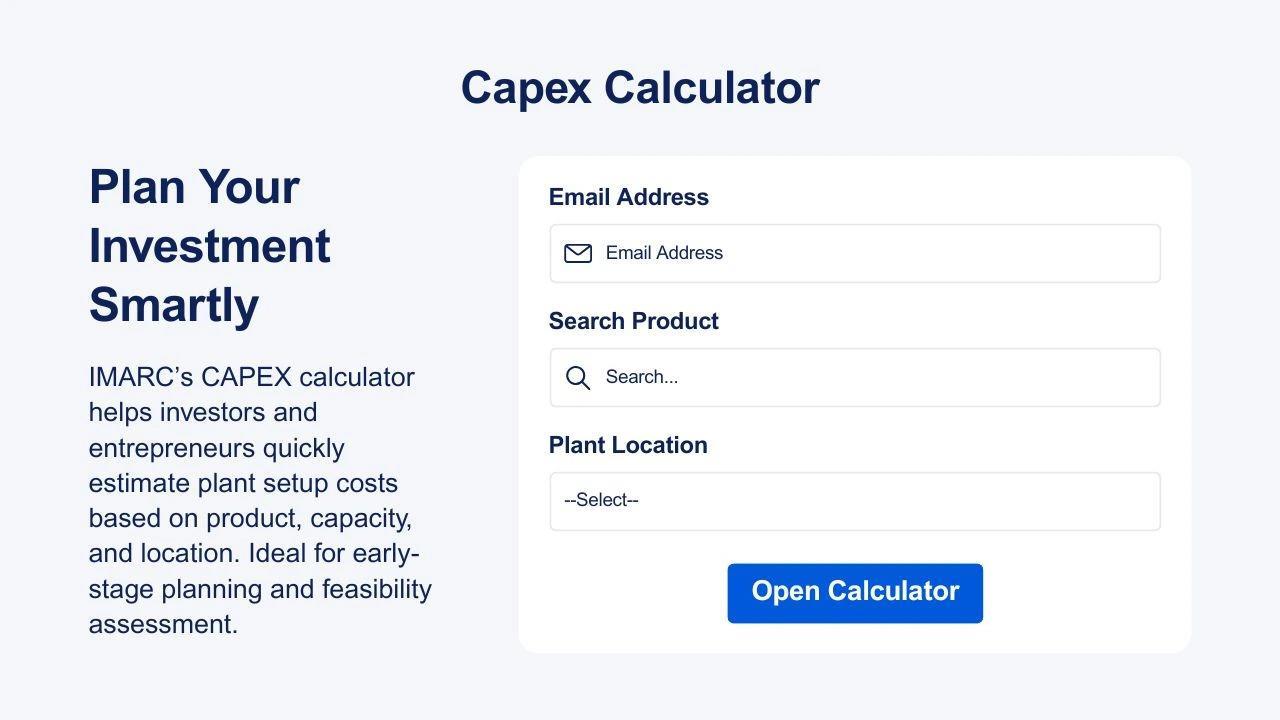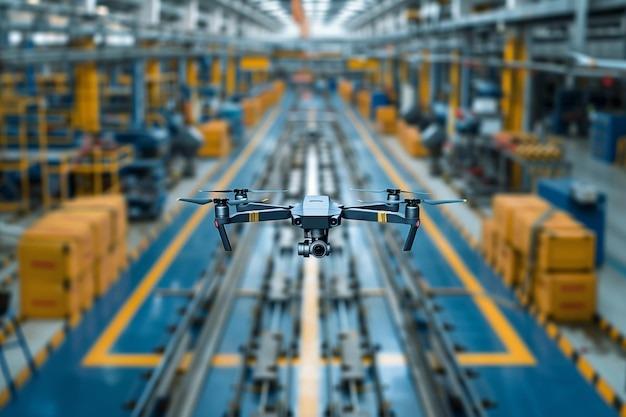Camera Drone Manufacturing Plant Setup Report 2025: Business Plan, Cost And Machinery Requirement
Setting up a camera drone manufacturing plant involves securing suitable industrial space, procuring specialized machinery for assembly and testing, sourcing components such as motors, sensors, and imaging systems, and implementing strict quality control measures. Skilled technicians, compliance with aviation and safety regulations, and strategic supplier partnerships are essential for operational efficiency and market competitiveness.
IMARC Group's report, titled “ Camera Drone Manufacturing Plant Project Report 2025: Industry Trends, Plant Setup, Machinery, Raw Materials, Investment Opportunities, Cost and Revenue,” provides a complete roadmap for setting up a camera drone manufacturing plant. It covers a comprehensive market overview to micro-level information such as unit operations involved, raw material requirements, utility requirements, infrastructure requirements, machinery and technology requirements, manpower requirements, packaging requirements, transportation requirements, etc.
Request for a Sample Report : https://www.imarcgroup.com/camera-drone-manufacturing-plant-project-report/requestsample
Camera Drone Industry outlook 2025:
The camera drone industry in 2025 is projected to experience strong growth, driven by increasing adoption across sectors such as filmmaking, agriculture, infrastructure inspection, and security. Advancements in AI-powered imaging, extended battery life, and autonomous navigation are enhancing product capabilities, widening their commercial applications. Rising demand for high-resolution aerial data in real estate marketing and environmental monitoring further fuels expansion. Regulatory frameworks in key markets are becoming more streamlined, encouraging innovation and international trade. Competitive dynamics are intensifying as established brands and emerging players invest in R&D, with global market revenues expected to surpass previous growth forecasts for the sector.
Key Insights for Camera Drone Manufacturing Plant Setup:
Detailed Process Flow:
-
Product Overview
Unit Operations Involved
Mass Balance and Raw Material Requirements
Quality Assurance Criteria
Technical Tests
Project Details, Requirements and Costs Involved:
-
Land, Location and Site Development
Plant Layout
Machinery Requirements and Costs
Raw Material Requirements and Costs
Packaging Requirements and Costs
Transportation Requirements and Costs
Utility Requirements and Costs
Human Resource Requirements and Costs
Capital Expenditure (CapEx) and Operational Expenditure (OpEx) Analysis:

Project Economics:
-
Capital Investments
Operating Costs
Expenditure Projections
Revenue Projections
Taxation and Depreciation
Profit Projections
Financial Analysis
Profitability Analysis:
-
Total Income
Total Expenditure
Gross Profit
Gross Margin
Net Profit
Net Margin
Key Cost Components of Setting Up a Camera Drone Plant :
-
Land and Infrastructure: Acquisition or lease of industrial space, construction, utilities, and site development.
Machinery and Equipment: Assembly lines, precision tools, testing rigs, and automation systems.
Raw Materials and Components: Motors, propellers, sensors, gimbal systems, batteries, and camera modules.
Labor Costs: Skilled engineers, technicians, quality inspectors, and assembly line workers.
Research and Development (R&D): Product design, prototyping, and performance testing.
Licensing and Compliance: Regulatory approvals, aviation safety certifications, and environmental clearances.
Marketing and Distribution: Branding, packaging, warehousing, and logistics.
Working Capital: Operational expenses, maintenance, and contingency reserves.
Economic Trends Influencing Camera Drone Plant Setup Costs 2025 :
-
Global Supply Chain Volatility: Fluctuating availability and prices of electronic components due to geopolitical tensions and semiconductor shortages.
Rising Labor Costs: Wage growth in manufacturing hubs, particularly in regions with skilled electronics and aerospace labor.
Technological Advancements: Adoption of automation and AI-driven production systems reducing long-term costs but increasing initial investment.
Energy Price Fluctuations: Variable costs of electricity and fuel impacting manufacturing and logistics expenses.
Trade Policies and Tariffs: Import/export duties affecting the cost of raw materials and finished goods distribution.
Currency Exchange Rates: Impact on international sourcing and equipment procurement costs.
Speak to an Analyst for Customized Report: https://www.imarcgroup.com/request?type=report&id=22685&flag=E
Challenges and Considerations for Investors in Camera Drone Plant Projects:
-
Global Supply Chain Volatility: Fluctuating availability and prices of electronic components due to geopolitical tensions and semiconductor shortages.
Rising Labor Costs: Wage growth in manufacturing hubs, particularly in regions with skilled electronics and aerospace labor.
Technological Advancements: Adoption of automation and AI-driven production systems reducing long-term costs but increasing initial investment.
Energy Price Fluctuations: Variable costs of electricity and fuel impacting manufacturing and logistics expenses.
Trade Policies and Tariffs: Import/export duties affecting the cost of raw materials and finished goods distribution.
Currency Exchange Rates: Impact on international sourcing and equipment procurement costs.
Conclusion:
The camera drone manufacturing sector in 2025 presents significant growth potential, fueled by expanding applications in commercial, industrial, and consumer markets. While technological innovation and rising demand create attractive opportunities, establishing a manufacturing plant requires careful consideration of capital requirements, regulatory compliance, and supply chain resilience. Investors must balance the benefits of automation and product differentiation against the risks posed by rapid technological shifts and competitive pressures. Strategic planning, strong partnerships, and continuous innovation will be critical in ensuring long-term viability and profitability in this dynamic and evolving industry.
About Us:
IMARC Group is a global management consulting firm that helps the world's most ambitious changemakers to create a lasting impact. The company excel in understanding its client's business priorities and delivering tailored solutions that drive meaningful outcomes. We provide a comprehensive suite of market entry and expansion services. Our offerings include thorough market assessment, feasibility studies, company incorporation assistance, factory setup support, regulatory approvals and licensing navigation, branding, marketing and sales strategies, competitive landscape, and benchmarking analyses, pricing and cost research, and procurement research.
Contact Us:
IMARC Group
134 N 4th St. Brooklyn, NY 11249, USA
Email: sales[@]imarcgroup.com
Tel No:(D) +91 120 433 0800
United States: (+1-201971-6302)
Legal Disclaimer:
MENAFN provides the
information “as is” without warranty of any kind. We do not accept
any responsibility or liability for the accuracy, content, images,
videos, licenses, completeness, legality, or reliability of the information
contained in this article. If you have any complaints or copyright
issues related to this article, kindly contact the provider above.
Most popular stories
Market Research

- House Of Doge And Bitstamp By Robinhood Announce Strategic Partnership For NYSE:ZONE Treasury
- Kucoin Partners With Golf Icon Adam Scott As Global Brand Ambassador
- Primexbt Wins Global Forex Award For Best Multi-Asset Trading Platform
- Your Bourse And B2BROKER Partner To Deliver Complete Brokerage Solutions
- Origin Summit Announces Wave 3: Animation Powerhouse Maggie Kang To Join Programming Lineup
- Blueberry Launches A Bold New Brand Platform






















Comments
No comment